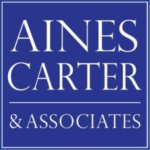Contents
- 1 Navigating the Transition: What to Do with Your 401(k) When Changing Jobs
- 2 Option 1: Retain Your 401(k) in Your Former Employer’s Plan
- 3 Benefits of Keeping Your 401(k) in the Plan
- 4 Considerations and Potential Drawbacks
- 5 Option 2: Roll Over the Money into an IRA
- 6 Advantages of an IRA Rollover
- 7 Potential Downsides
- 8 Option 3: Roll Over Your 401(k) into a New Employer’s Plan
- 9 Benefits of Consolidation
- 10 Key Considerations
- 11 Option 4: Cash Out Your 401(k)
- 12 Consequences of Cashing Out
- 13 How to Execute a Rollover Correctly
- 14 Making the Best Decision for Your Future
Changing or leaving a job can be a significant and emotional life event. Whether you’re moving to a new opportunity, retiring, or simply taking a break, it’s essential to consider the future of your 401(k) or 403(b) plan. These retirement accounts often represent a substantial portion of your financial future, so making informed decisions about what to do with them is crucial. Here are four options for managing your retirement savings after leaving a job.
Option 1: Retain Your 401(k) in Your Former Employer’s Plan
One option is to leave your 401(k) in your previous employer’s Plan. Most companies allow former employees to maintain their accounts within the Plan, although some restrictions may apply.
Benefits of Keeping Your 401(k) in the Plan
Continued Growth
In a stable investment environment, your retirement savings continues to grow tax-deferred.
Penalty-Free Withdrawals
If you leave your job when aged 55 or older, some penalty-free withdrawals are available. This benefit is not always available with an IRA.
Lower-Cost Investment Options
Some employer plans offer institutionally priced or unique investment choices that may not be available elsewhere.
Creditor Protection
Federal law generally protects against creditors for assets in employer-sponsored plans.
Considerations and Potential Drawbacks
Low Balance Consequences
Accounts with low balances (under $7,000) may be cashed out or automatically rolled over to an IRA, depending on the Plan’s rules.
Contribution Restrictions
You cannot add new contributions to your account, and borrowing options through loans may no longer be available.
Withdrawal Limitations
Some plans may not allow partial withdrawals, requiring you to withdraw the entire balance instead.
Required Minimum Distributions (RMDs)
Upon reaching age 73, you must begin taking RMDs from your account, with an increased starting age of 75 for those born in 1960 or later.
Option 2: Roll Over the Money into an IRA
Another choice is to roll your 401(k) into an Individual Retirement Account (IRA). This option allows for greater control over your investments and potentially more flexible withdrawal options.
Advantages of an IRA Rollover
Tax-Deferred Growth
Similar to your 401(k), an IRA allows your money to grow tax-deferred.
Qualified Withdrawals
For individuals under 59½, penalty-free withdrawals may be available for specific circumstances, such as first-time home purchases or educational expenses.
Diverse Investment Options
There are a greater range of choices for investments with IRAs including things like stocks, bonds, or mutual funds.
Roth Conversion
If you have Roth 401(k) assets, these can be rolled into a Roth IRA, preserving their tax-free withdrawal status.
Potential Downsides
Potentially Higher Costs
IRAs may incur higher fees and expenses than employer-sponsored plans.
Creditor Protection Variability
401(k) plans offer robust creditor protection, but IRA protection varies by state.
RMDs
Traditional IRAs also require RMDs starting at age 73 or 75 for those born in or after 1960.
Option 3: Roll Over Your 401(k) into a New Employer’s Plan
If you’re moving to a new job, you might consider rolling your old 401(k) into your new employer’s Plan. However, not all employers accept rollovers, so verifying this option with your new HR department is crucial.
Benefits of Consolidation
Tax-Advantaged Growth
Your funds continue to grow on a tax-deferred basis.
Simplified Management
Combining accounts can streamline the management of your retirement savings.
Cost-Effective Investments
New employer plans may offer low-cost, institutionally priced investment options.
Creditor Protection
As with your former employer’s Plan, federal law protects against creditors.
Key Considerations
Plan Rules and Investment Options
Understand your new employer’s plan’s investment options and rules, including fees and available assets.
Net Unrealized Appreciation (NUA)
If you hold appreciated company stock, consider the NUA implications before rolling over to avoid losing favorable tax treatment.
Option 4: Cash Out Your 401(k)
While it may be tempting, cashing out your 401(k) should generally be a last resort. Early withdrawals are subject to significant penalties and taxes.
Consequences of Cashing Out
Taxes and Penalties
Withdrawals before age 59½ incur income taxes in most cases with an early withdrawal penalty of 10%. Exceptions exist, such as leaving employment at age 55 or older, but these do not apply to IRA rollovers.
Lost Future Growth
Cashing out can severely impact your retirement savings by missing out on potential market gains and compounding interest.
How to Execute a Rollover Correctly
To avoid tax complications, executing a direct rollover from one financial institution directly transferring funds to the other is advisable. Avoid having the distribution made payable to you, as this triggers a mandatory 20% tax withholding and can lead to potential penalties if not handled correctly.
Making the Best Decision for Your Future
The best choice for handling your old 401(k) depends on your unique financial situation, risk tolerance, investment goals, and retirement timeline. Whether you opt for an IRA, a new employer’s Plan, or another option, consider consulting with a professional to help navigate these choices and make sure that the investments benefit your long-term financial objectives.




Leave A Comment